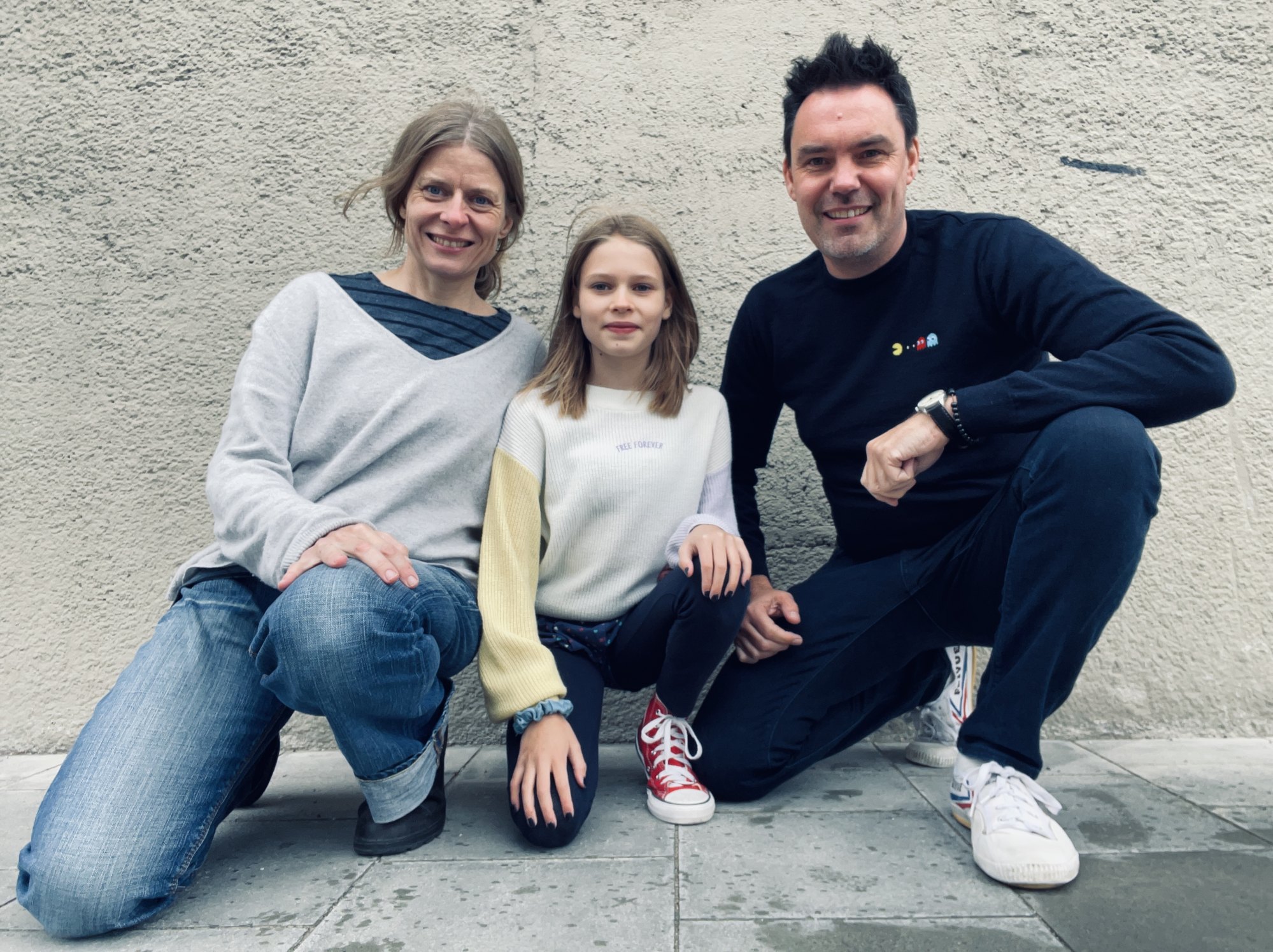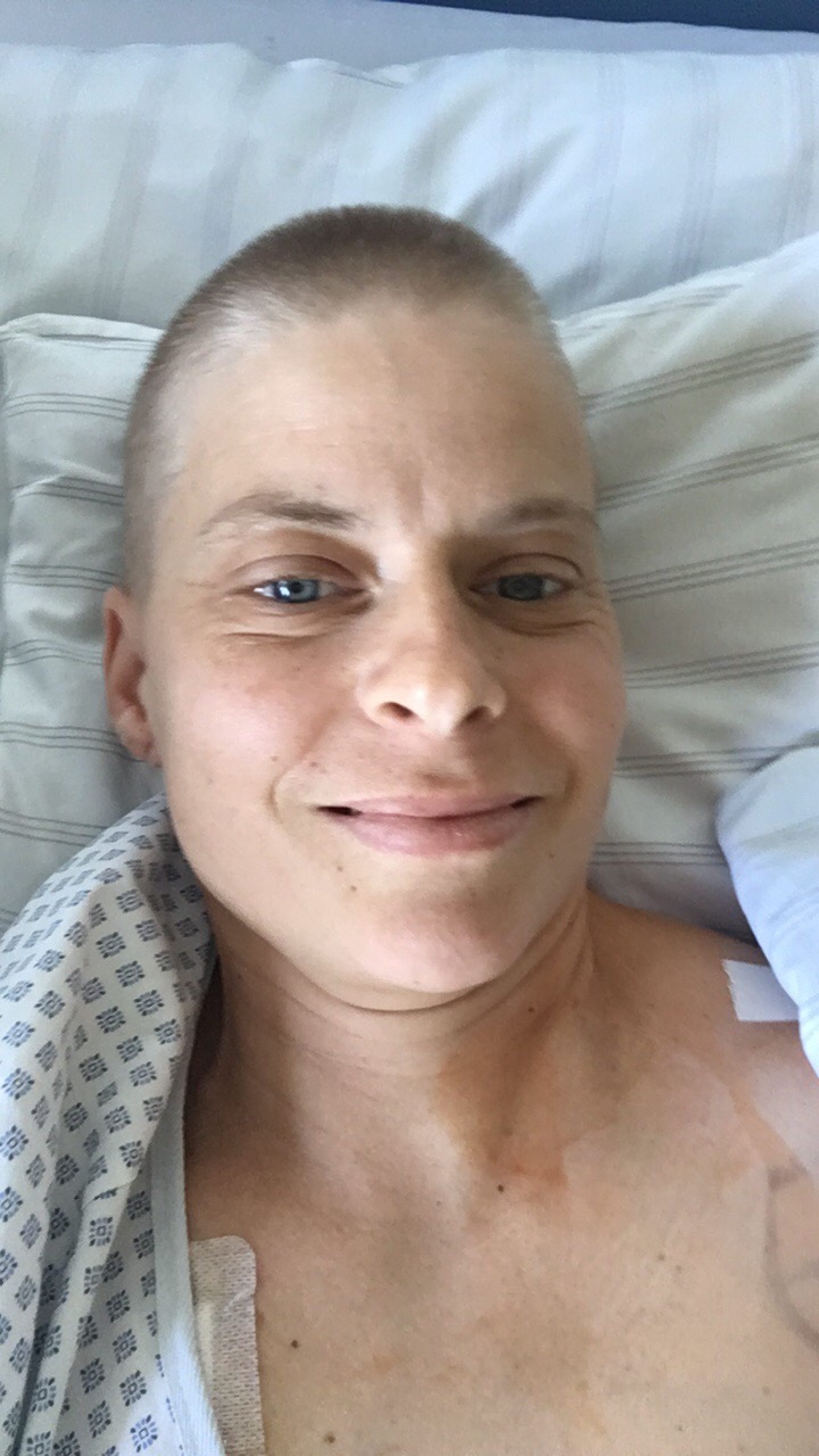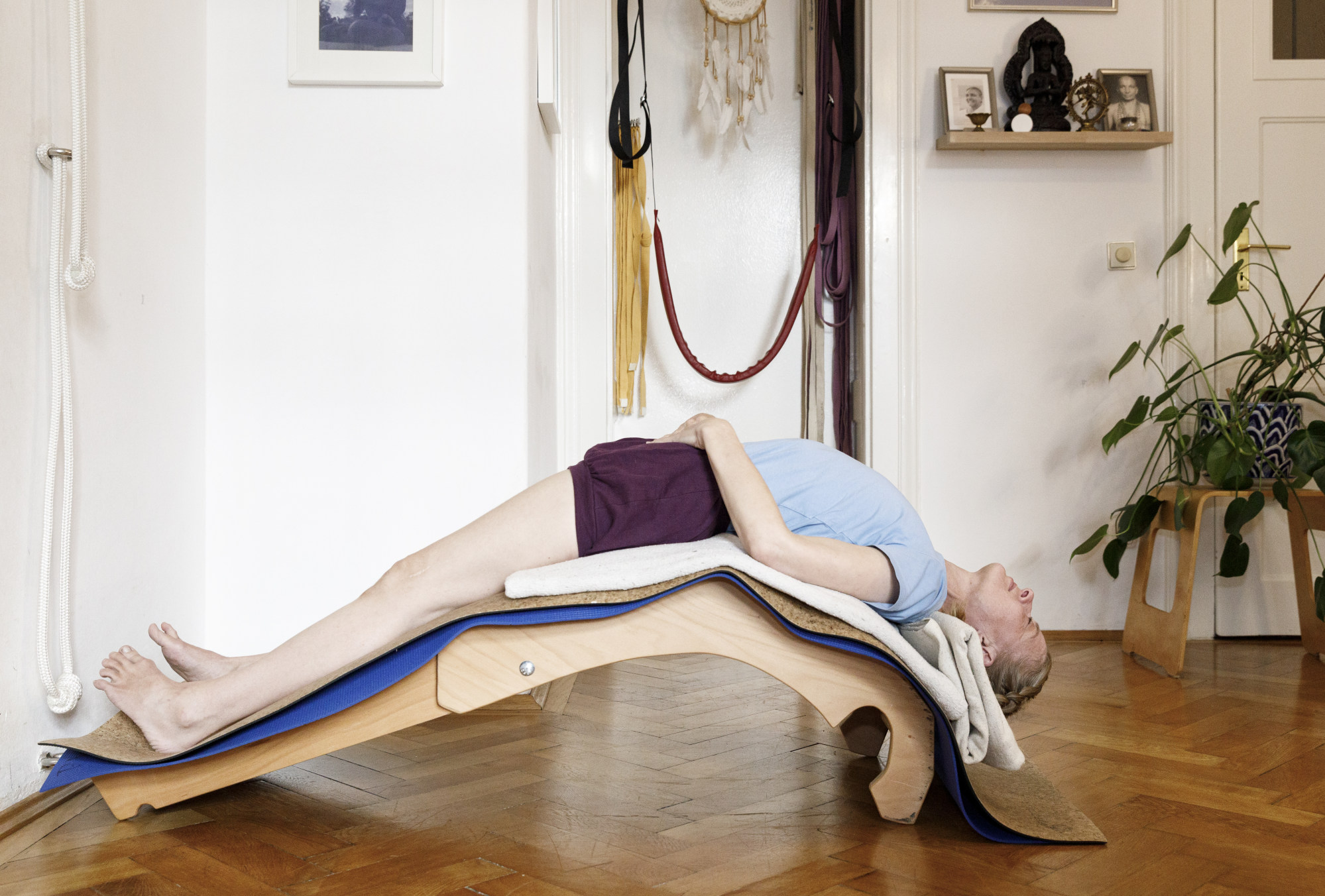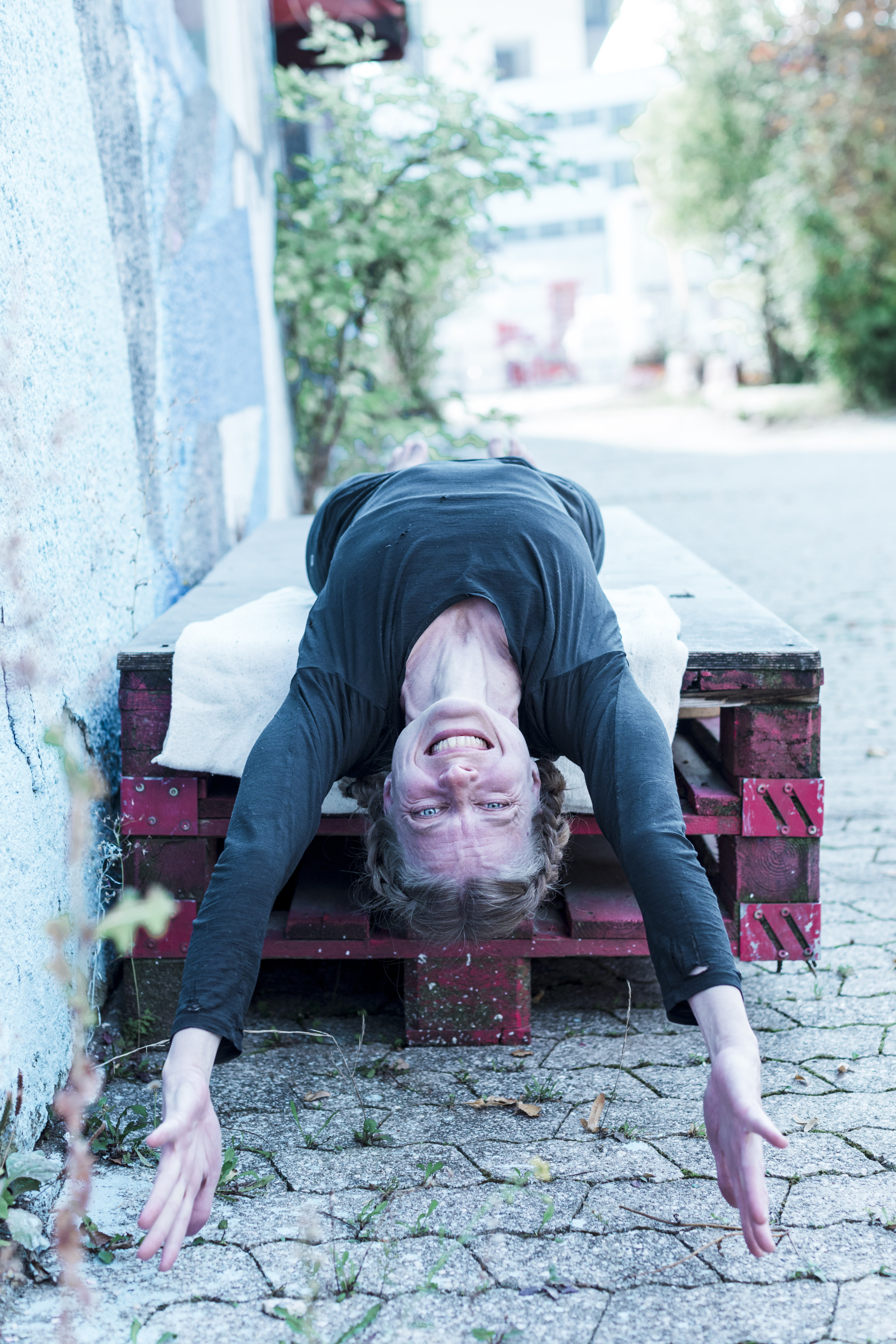
How Iyengar yoga helped a breast cancer survivor stay focused on the present and bolster her immune system during and after treatment
- During Breast Cancer Awareness month, Petra Winkler-Hirter describes how Iyengar yoga alerted her to cancer and gave her tools to help beat it – twice
- One of the quotes from Iyengar yoga’s founder gave her strength: ‘Yoga teaches us to cure what need not be endured and endure what cannot be cured’
Yoga teacher Petra Winkler-Hirter credits yoga with teaching her to live in the present moment – and to accept her mortality.
Diagnosed with breast cancer in 2016, and discovering it had spread to her brain two years later, Winkler-Hirter says a vital cornerstone of her cancer journey has been her regular yoga practice.
It enabled her to accept the diagnosis, care for herself during the treatment, and rebuild her immunity.
Winkler-Hirter, who was a massage therapist and personal trainer, took to Iyengar yoga (named after the late yoga master BKS Iyengar) in 2004 after attending classes in a studio in her neighbourhood in Sydney, Australia, where she lived at the time. She trained to become a teacher and began teaching Iyengar yoga in 2014.

Not only did yoga become her vocation, it also saved her life, she says.
“While attending a yoga workshop at the Ramamani Iyengar Memorial Yoga Institute in Pune, India, as I stood in mountain pose [tadasana], I felt that there was no space in my armpits. I knew instantly that something was wrong,” says the Swiss 45-year-old, who now lives in Munich, Germany.
She was confronted with the fact that she had virtually no chance of a cure.
“My whole world came to a standstill. How would I tell my five-year-old daughter?” she says.
She was in favour of trying alternative treatments and resisted having chemotherapy. As her health deteriorated, though, she opted for the treatment.
“My back and ribs hurt constantly, I wasn’t able to lie down or stand straight without feeling excruciating pain,” she says.
“I was not afraid of the tumours, but not being able to move was one of the worst things that could happen to me. My husband and my daughter suffered as much as I did, seeing me in such agony.”

She spent a month in hospital in 2017, having chemotherapy, radiation on the spine and antibody therapy – a form of targeted treatment that uses lab-created antibodies that find and kill specific cancer cells.
“I carried a large wooden bench to the hospital, much to the astonishment of the medical staff. I practised restorative asanas like gentle backbends – two-legged inverted staff pose [dvi pada viparita dandasana] – on the bench, and would lie on it with my arms spread out, supported with bolsters and blankets.
“After three weeks the doctors were surprised at how upright I looked.”

She also practised an immune-boosting sequence that Iyengar designed in 2009, after the swine flu (H1N1) outbreak.
Recovering at home, she had ropes installed so she could hang from them to help her practice headstands (sirsasana). Gradually, she felt her energy levels increase.

The treatments were effective, stopping the cancer’s growth. By year’s end, her situation had stabilised. As maintenance therapy, she continued with immunotherapy.
However, in October 2019, after suffering seizures, an MRI scan showed cancer had spread to her brain. She had two brain surgeries, followed by local brain radiation.
“This was one of the toughest times for me. The first cancer diagnosis was a shock, the second one really threw me off,” she says.
She remained steadfast in her yoga practice, and says doing inversions and gentle backbends was the turning point in her recovery.
“Practising setu bandha [shoulder supported bridge pose] and asanas where the chin is locked, to stop the energy from moving to the head, helped me recuperate,” she says.
Tiffany Hambley, an Iyengar yoga instructor who taught at the Iyengar Yoga Centre of Hong Kong before moving to Sydney, has taught Iyengar yoga to breast cancer survivors in their post-treatment stage.
“There is no one-size-fits-all in yoga. This is also true for cancer,” she says. “At different points in the cancer journey, different tools are needed. Iyengar yoga recognises this fact and adapts and responds to the individual.”

She says Iyengar yoga offers a range of tools – “props, restorative poses, an understanding of subtle energy in the body, and an overall emphasis on truly seeing each student and their needs”.
This is why this yoga style is of real use to students facing a cancer diagnosis and cancer treatments, she says.
“Students with cancer find physical benefits as well as mental clarity and emotional relief from Iyengar yoga.”
Yoga has given me so much and I want to help women who are fighting this battle
Winkler-Hirter also turned to the Iyengar Yoga Cancer Book by senior Iyengar yoga teacher Lois Steinberg.
“Practising asanas and their modifications can alleviate pain from cancer, ease its treatment and improve the quality of life,” Steinberg writes.
Her book details poses to perform during and after chemotherapy to help with nausea, headache and breathing difficulties, and poses to do in recovery.
Iyengar was emphatic that during cancer treatment and recovery, yoga practitioners must focus on poses that open up the armpits and the groin area, Steinberg writes.
“Lymphatic nodes congregate in these areas and act as filters to remove harmful substances from the body. Creating space in these regions through asana practice is important to help the lymph nodes do their work.”

Winkler-Hirter’s cancer has not progressed, and she credits her yoga practice with enabling her to stay mobile and pain-free.
Especially during the acute phases of her illness, yoga has helped her physically, she says. It also helped her stay present in the moment and not fall prey to thoughts of “what if”.
One of Iyengar’s quotes has given her strength: “Yoga teaches us to cure what need not be endured and endure what cannot be cured.”
In every phase of her journey, Winkler-Hirter’s yoga practice has given her support, energy and hope. Since her initial diagnosis, she has shifted her attention to teaching women with breast cancer.
“Yoga has given me so much and I want to help women who are fighting this battle,” she says.
“We can’t change the past, and there is no point in worrying about the future. The only truth we have is the present moment. That is the biggest gift that yoga has given me.”

